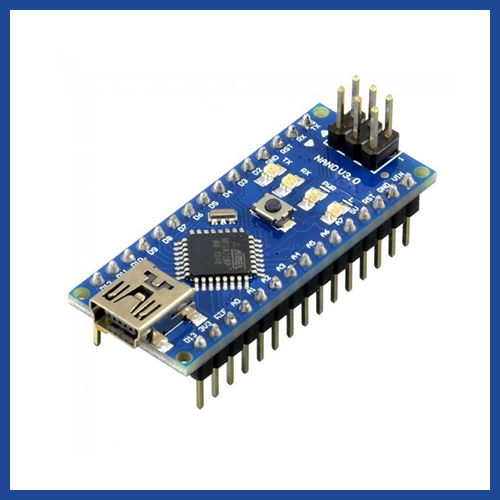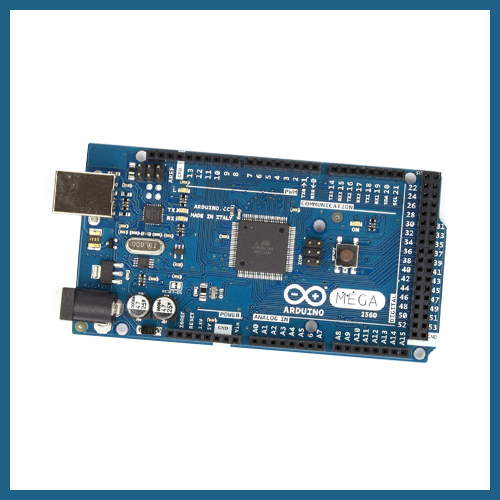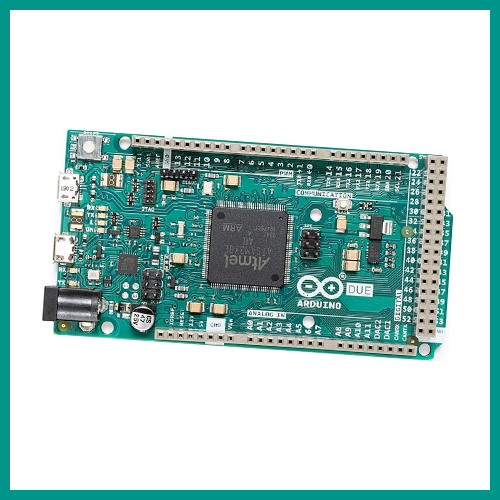Five best Arduino boards
The five Arduino boards that are discussed here are:
- Arduino Uno for basic level projects
- Arduino Nano for breadboard projects
- Arduino Mega 2560 Rev3 for advanced level projects
- Arduino due for big and complex projects
- Arduino MKRZero for audio and sound projects
Arduino Uno for basic level projects
The Arduino board used for the beginner level projects is the Arduino Uno board as it is compatible with a variety of peripherals. This board is the most commonly used board as it is user friendly and easily configurable. Moreover, this board has an option of replacing its microcontroller which also makes it the first choice for the beginners. There are also a huge number of beginner level projects where this board can be used some of them are:
- Temperature controlled fan
- Visitor counter
- Obstacle detection
- Home security system
The specification of the Arduino Uno board are given in the table given below:
| Specifications | Arduino Uno |
|---|---|
| Microcontroller | ATmega328P |
| Digital pins | 14 |
| Analog pins | 6 |
| Pins for pulse width modulation | 6 |
| Static RAM | 2KB |
| Flash memory | 32KB |
| EEPROM | 1KB |
| Operating voltage | 5 volts |
Arduino Nano for breadboard projects
From the name it can be assumed that this board will be of smaller size and will perform a limited number of functions as compared to the other Arduino boards. However, despite having smaller size it can be used in number of projects some are given below:
- Plants watering system
- Using LED for indications
- Monitoring the water level
- Interfacing DC motors
- Taking inputs using keypads
Due to its small size this board is suitable for the projects that use breadboard as it has built-in header pins so that it can be fixed on breadboard and for beginner’s level students it is a best option. This board does not have any power jack for power supply, so it relies only on its used port for power supply, or the external power supply given through the breadboard.
The technical specifications of the Arduino nano is given in the table below:
| Specifications | Arduino Nano |
|---|---|
| Microcontroller | Atmega328 |
| Digital pins | 14 |
| Analog pins | 8 |
| Pins for Pulse width modulation | 6 |
| Static RAM | 2KB |
| EEPROM | 1KB |
| Flash memory | 32KB |
| Operating voltage | 5 to 12 Volts |
Arduino Mega 2560 for advanced level projects
The Arduino Mega is suitable for complex and advanced level projects as it comes with a large number of input output pins. Unlike the Arduino Uno and Nano, the Arduino Mega has higher RAM, higher memory and a faster microcontroller. There are wide range of projects in which the Arduino Mega 2560 can be used some of them are:
- Food quality prediction
- Creating a bioprinter
- Robotic arm based on gesture control
- Seismic activity monitor
The specification of the Arduino Mega is given in the table below:
| Specifications | Arduino mega 2560 Rev3 |
|---|---|
| Microcontroller | ATmega 2560 |
| Digital pins | 39 |
| Pins for pulse width modulation | 15 |
| Analog pins | 16 |
| Static RAM | 8KB |
| Flash memory | 256KB |
| EEPROM | 4KB |
| Operating voltage | 5 volts |
Arduino Due for big and complex projects
The Arduino Due is a viable option when it comes to big projects having large codes because it is equipped with a 32-bit ARM core microcontroller and a memory of 512 kilobytes. Moreover, it has a dedicated port for 9 volts battery power when the board is to be required to run at independent mode. Furthermore, the controller used in this board is faster as compared to all other Arduino boards. There are variety of projects which uses the Arduino Due board some of them are:
- Interfacing the TFT displays
- Making a quadcopter using Arduino Due
- Arbitrary waveform generator
- Make a small computer using Arduino Due
The technical speciation of Arduino due are given in the table displayed below:
| Specifications | Arduino Due |
|---|---|
| Microcontroller | Atmel AT91SAM3X8E ARM Cortex |
| Analog pins | 12 |
| Digital pins | 54 |
| Pins for pulse width modulation | 12 |
| Static RAM | 96 KB |
| Flash memory | 512KB |
| Operating voltage | 3.3 to 12 volts |
Arduino MKRZero for Audio and sound projects
The Arduino MKRZero is used in the projects which are totally related to the audio or is a viable option for the music makers. This board comes with header pins which makes it easy to interface it with the devices using a breadboard. There are number of audio projects that require the use of Arduino MKRZero board some of them are:
- Generating the melodies
- Activating LCD using sound sensor
- Mini piano
- Band audio spectrum
For technical specification a table of the specification of the Arduino MKR zero is given below:
| Specifications | Arduino MKR Zero |
|---|---|
| Microcontroller | SAMD21 Cortex-M0 |
| Digital pins | 22 |
| Analog pins | 7 |
| Pins for pulse width modulation | 12 |
| Static RAM | 32KB |
| Flash memory | 256KB |
| EEPROM | Not available |
| Operating voltage | 5 volts |





